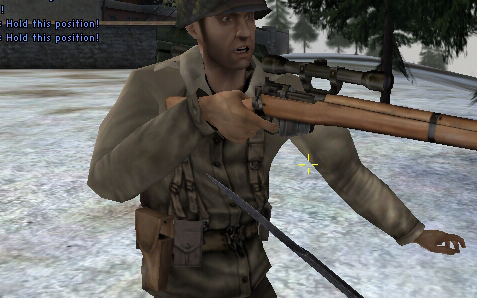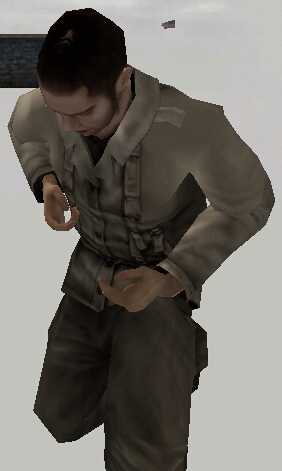Tony Manninen, PhD, Professor, LudoCraft Game Design and Research Unit, University of Oulu. Tony is a computer games designer, researcher and teacher. His areas of research include design, analysis and production of multiplayer games and their diverse applications. In his PhD research he studied the issues related to interaction forms and their manifestations in multiplayer games. He has designed several experimental games and has published game related papers in academic forums, as well as, game reviews and game related articles in popular media. He is the leader of LudoCraft, which studies games and applies the theoretical knowledge into game design.
Tomi Kujanpää (M.Sc.) works as an Assistant Professor and researcher in the game design and research unit, LudoCraft, in the Department of Information Processing Science at the University of Oulu. His current research interests include networked multi-player games, game characters, and 3D models in computer games. The working title of his PhD research is "Characters as Game Design Elements". In the research he is studying issues related to game character design in the context of multi-player role-playing games.
The Hunt for Collaborative War Gaming - CASE: Battlefield 1942
by Tony Manninen and Tomi Kujanpää
Abstract
This paper analyses the interaction forms of a contemporary multiplayer game in order to offer implications for multiplayer game design. The motivation for the research originates from the fact that the lack of intuitive and perceivable interaction cues is one of the distinctive features separating networked game settings from face-to-face encounters. The analysis of the interaction forms in multiplayer game sessions indicates that the players can use various forms of non-verbal communication and perceivable actions to reduce communication difficulties. However, players still tend to communicate outside the game system and they try to overcome the limitations of the systems by inventing various imaginative ways to communicate, co-ordinate and co-operate. The findings of this study support the earlier research conducted within the field. However, the improvements in game technologies have been able to slightly reduce the problems of net gaming. Nevertheless, game designers need to take versatile interaction form support into account when designing and developing multiplayer games. It is mainly perceivable and holistic manifestations of interaction that enable players to fully collaborate and cooperate in networked game settings.
Introduction
Multiplayer games involve communication, co-operation and co-ordination between players. The difficulties in computer-mediated communication and collaboration support, however, are evident everywhere. The lack of face-to-face interaction limits the participants of networked game sessions to interact by the rules and mechanics of the game systems, and therefore, reduces the quality of interaction between players. In order to make the possibilities of enhanced interaction support visible, this paper describes and analyses the interaction forms that exist in a contemporary multiplayer 3D game. Interaction forms are perceivable in-game actions that act as manifestations of the player-to-player and player-to-environment interaction. These forms are used to convey the actions of the player to oneself and to others. They enable awareness of actions by offering mutually perceivable visualisations and auralisations within the virtual environment of game world.
In order to shed some light on the aforementioned problems, this study analyses and discusses the interaction forms of Battlefield 1942 (2002), a contemporary multiplayer war game from Digital Illusions CE, published by Electronic Arts. The game itself consists of 3D virtual battlefields where multiple players can participate in a collaborative war game. The participants control their avatars (e.g., soldiers and vehicles) by using first-person or third-person views. The game represents a genre of multiplayer games in which the need for inter-player co-operation is evident. In these games the different soldier profiles (i.e., player character skills) and various war machines (e.g., land, sea and air operations) are best used in tactically integrated way. The game also supports a maximum of 64 simultaneous players, which in turn increases the possibilities and variety of interaction.
The research approach follows the guidelines set by Manninen (2002) who describes a similar study conducted for the multiplayer game, Counter Strike. Furthermore, the elaboration of the interaction form concept model and the corresponding scientific framework presented by Manninen (2003) is adopted for this analysis.
Game-related phenomena have been studied and approached from a number of viewpoints. Researchers have tackled the subject in various disciplines (Aarseth, 2001). Still, the anatomy and design of games has mainly been left to the practitioners in the games industry (cf. Crawford, 1982; Rouse, 2000; Rollings & Morris, 2001). This paper aims at contributing to the increasing body of literature related to theories and practices of game design.
The concept of interaction form, in this paper, covers the perceivable manifestations or instances of in-game actions that can be used for interaction. These forms are instantiated via audiovisual content represented within a game environment. The emphasis is on perceivability – if an interaction form can be perceived it can contribute to the level of interactivity. The focus of this paper is on the game world and its corresponding elements. User interface devices and occurrences outside the computer are not directly discussed.
Multiplayer Game as A Form of Groupware
Interaction has been studied in several fields and under several names. The modes and types of interaction have been presented, for example, in the areas of embodied actions (Robertson, 1997) and autonomous agents (Badler and Allbeck, 2000). The non-verbal communication aspects of collaborative virtual environments (CVEs) have been studied, for example, in the context of user embodiment (Benford et al., 1997; Fraser et al., 1999), communicative behaviours and conversational interface agents (Cassell, 2000), and realistically expressing avatars (Thalmann, 2001).
Contemporary multiplayer computer games are similar to CVEs developed for other application domains (e.g., research, military, and training). CVEs - like games - provide another means of simulating real or imaginary world places and activities. They convey information about real world places effectively because they tend to preserve the spatio-temporal aspects and natural modes of the interaction characteristic of real world environments. They are used to create a computer-generated simulated space with which an individual interacts (Witmer et al., 1996).
While the early games suffered from both user interface and communication limitations, they still were able to provide meaningful interaction. Improved visuals and technology reduce the effort required to approach other players in the game world for interaction. Further exploitation of auditory features (speech and interaction cues), could greatly reduce confusion and improve usability. Still, limitations that prevent the full expression of interaction prevail. For example, if avatars are not unique to each user, it is difficult to distinguish between strangers and familiar users (Damer et al., 1996).
The main emphasis in games is to provide entertainment and challenges for the players. Games do not generally aim at supporting existing work settings. Instead, they emphasise compelling content, fast pace of action and aspects of fun that mainly occur within the virtual environment itself. Therefore, the coupling to the physical world processes and procedures is not the key issue as it is in workplace studies where the application of purely virtual environments is not usually successful (Büscher et al., 2001). The whole purpose and context of action is the system itself. Although playing can include competitive or collaborative activities conducted by geographically distributed players, the sole characteristic of computer games makes it a very specific case of CVE. The game not only attempts to support players' activities - it is the activity.
According to McGrath and Prinz (2001), technologically mediated communication is characterised by its digital nature - there is either constant communication or none at all. However, multiplayer games can contain a number of simultaneous communication channels, all with varying magnitudes within the continuum of communication. This means that, strictly speaking, the traditional turn-taking problem of groupware applications does not apply. The players simply do not care to wait for their turn. They continue to act and interact by using various channels. If talking is not feasible, they may choose to jump up and down, shoot a couple of rounds, or do some other non-verbal actions instead.
Interaction Form Model as A Framework for Analysis
This research adopts the framework for interaction form analysis originally proposed by Manninen (2000). With this approach in mind, the perceivable interaction forms occurring in a contemporary multiplayer computer game have been analysed. The interaction form model draws on theoretical knowledge (e.g., communication theories) and empirical material (video recordings, interviews, and observations) collected from networked games and game playing sessions (Manninen, 2003)
The conceptual model is a structuring tool during the analysis, and thus, the aim of this work is to explicitly illustrate the occurrences of individual interaction forms in relation to the model. Figure 1 represents the first layers of the concept model illustrating the main interaction forms that can be found within current multiplayer games and CVEs. The basis for the model is the categorisation of various interaction forms in terms of communication channel, context, and acting entities (e.g., body parts, environment, participants, etc.). The forms have been categorised into 12 classes, each consisting of a number of sub-concepts. The categories will be further explained during the empirical analysis.
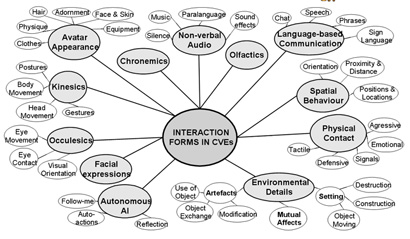
Figure 1. Concept model of interaction forms (Manninen, 2002).
The material gathered during the participatory observation sessions consists of screen shots automatically collected during the game sessions at 1 to 10 second intervals. In addition to this, self and group reflection was conducted, based on the diaries written by the players, in order to fill in the details of individual actions and action sequences.
Participatory observation, in this case, means that the authors were playing the game together with other players. The total amount of playing hours varied from 150 to 250 hours per person. In order to reduce the impact of potential biases, the focus of the study is on perceivable interaction forms (i.e., visible or audible). These forms are illustrated and their role in supporting communication, collaboration and co-ordination is brought forward.
The following sections aim at providing game designers and developers an insight into the interaction forms that can enhance and improve multiplayer games. The theoretical background is strongly linked with the practice through descriptions and illustrations of perceivable interaction forms.
Interaction Form Examples
This section describes some of the sample findings in relation to perceivable interaction forms during the observed gaming sessions. Some of the examples are selected directly from the events evident in the screen shots, while others have been formulated during reflection discussions. The cases have been selected from the material based on their significance, importance, and level of interest in terms of game design. The descriptions are categorised according to the components of the interaction model.
The examples are illustrated in order to illustrate the practical use of interaction forms and how they can create and enhance different game situations. The implications for design emerge partially from these descriptions. The data, however, does not cover interaction forms exhaustively and, therefore, some design implications are offered based merely on the limitations of support of a particular interaction form category.
Some of the categories are discussed in more detail due to the evidence indicating the significance, or sheer volume, of the occurrence of corresponding interaction forms. The olfactics category is not analysed because the game does not have any support, or a simulated model, for the sense of smell.
Avatar Appearance
Avatar Appearance has at least two main forms in the game. First, it provides visual team information to other players. For example, Russian soldiers wear distinctively realistic clothes and gear and are, thus, easily recognised. The helmet shape, length of coat, colour and pattern of camouflage, and features of equipment all follow the historically accurate prototypes. Second, the appearance allows the players to identify different roles in the game. That is, a medic has the Red Cross insignia and corresponding equipment, an engineer carries tools, an anti-tank soldier is portrayed with a bazooka in his hand and a scout carries a radio in addition to his rifle. Figure 2 illustrates the five different roles. From left to right: assault, medic, engineer, anti-tank (top) and scout (bottom).
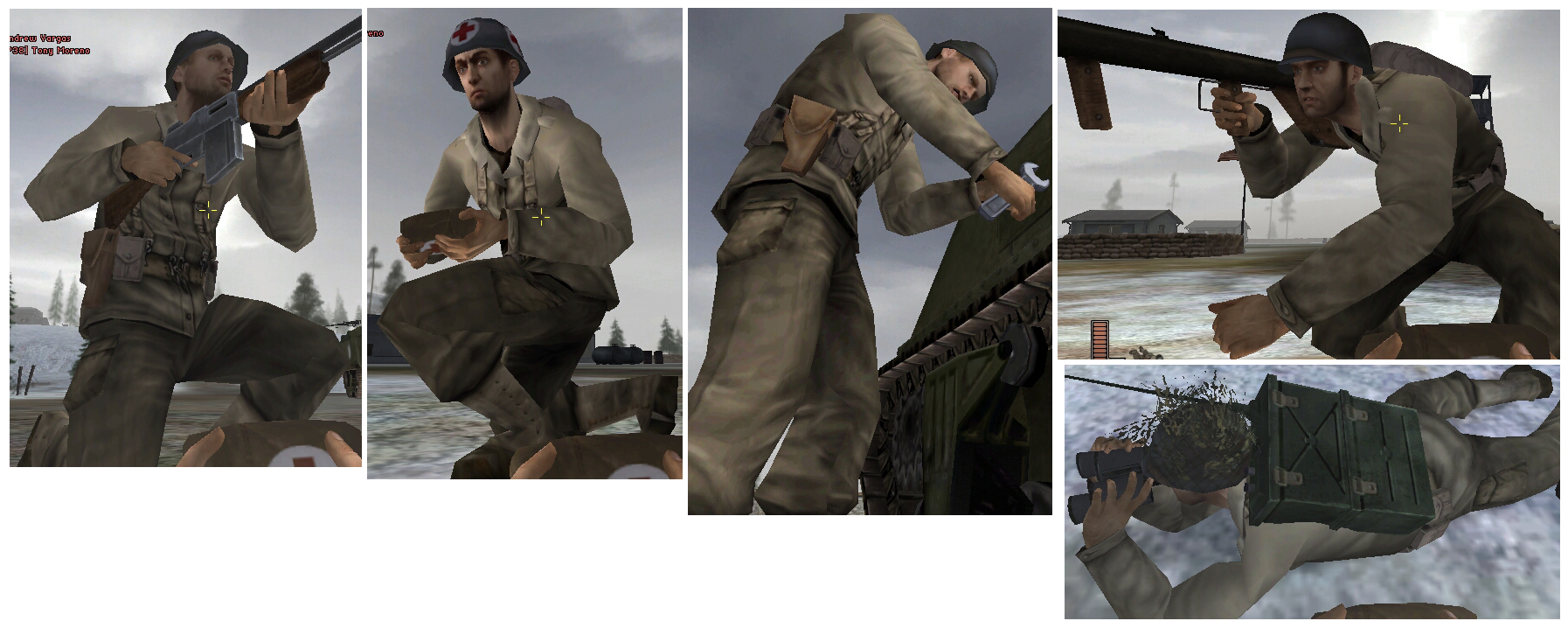
Figure 2. Representations and visual characteristics of various roles available for players.
The physique of the avatar is, however, limited in terms of size and body structure. Furthermore, team members with same roles have similar type of clothes. This means that when encountering, for example, several anti-tank soldiers, they all look alike. The only way to directly identify players is to check the name tag, which is portrayed on top of the avatar.
The active weapon and equipment are visible to others, and thus it is possible to estimate the range, speed of fire, and other characteristics of the fellow team members and opponents. However, as in many other games of this genre, the effectiveness of this visual information seems to be rather low due to the average firing distances. If the player sees an opposing team member, there is either a very short time to react, or the opponent is too far to be observed in detail (except with binoculars, or a telescope, which is available for certain weapons).
Apart from the active weapon and other visible equipment, the appearance of avatars is relatively static and mainly offers support for team and role identification. However, the level of perceived details is not always adequate to enable accurate identification. The avatars are generally too far away to be clearly recognised. This phenomenon changes with the increase of graphics resolution. With the high-end displays, it is possible to set the level of resolution high enough to visually perceive more detailed information.
The drawback, or at least weakness, of the realism-orientation in appearance is the restriction to use only appearance forms, which are realistic enough. This leaves a huge amount of improvement responsibility for the hardware and software (e.g., resolutions, speed, etc.). Nevertheless, as a form of self-expression, the avatar appearance is not adequately supported within the game. While identification is possible because of name tags, the visual character seems to have a lesser role. The feeling of comradeship comes mainly from the actions and experiences, not from the visual appearance of a fellow squad member.
Facial Expressions and Occulesics
The basic facial features of an avatar, with a specific role, consist of a photo-realistic face with slight dynamic changes in expressions. Most of the changes, such as blinking of eyes and subtle expressions, are not directly controllable by the players and, thus, only add to the liveliness of the avatars. However, some perceivable expressions are combined with specific actions, such as getting injured or killed (e.g., grins) and when initiating certain pre-defined radio messages (e.g., when shouting "Go Go" the mouth is almost lip-synched). Sample facial expressions from the game are illustrated in Figure 3.
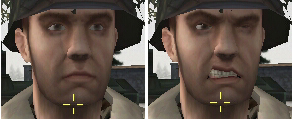
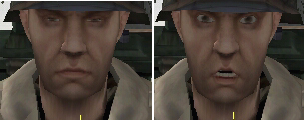
Figure 3. Different facial expressions (neutral, grin, squint, and “lip-synch”).
Eye movement and direction, or occulesics, are not specifically coupled with subtle changes in the direction of the player's gaze. Instead, the eyes mainly stay fixed in the general direction of the face. However, there are certain non-controllable dynamics involved as avatars move their eyes constantly in quick glances. Furthermore, the eyes blink frequently which, in turn, makes the avatars seem amazingly real.
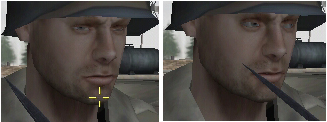
Figure 4. Slight changes in the perceived gaze direction produce the glancing effect.
The level of facial details and dynamics is somewhat surprising because the fast action nature of the game does not leave much room for the players to observe each other's expressions. The fast pace of the game may render the effectiveness of facial expressions useless, as there may not be enough time for the players to perceive these relatively small-scale cues in any case. The importance of facial expressions is definitely stronger in more socially oriented games, such as role-playing.
Strong and dynamic facial expressions could, however, enhance close-proximity encounters quite dramatically. Since the face is a very important carrier of interaction forms in the real world, it could have an effective role in game environments as well. The designers should, perhaps, take this into account and harness facial expressions for a variety of purposes. Basic expressions are just one area of support. The face could be used for more versatile and subtle expressions as well. Furthermore, as with the appearance, facial expressions do not need to be bounded with the limitations of realism. Caricatures and exaggerations could possible enhance the perceivably from a distance (i.e., as in comparison between theatre and TV performances).
Kinesics
The animations of avatars, in Battlefield 1942, are not just additions to the overall atmosphere as in many visually compelling computer games. Although the pace of the game does not leave much extra time to observe these non-verbal cues, they convey an abundance of information about the activities of players. Most of the actions that players can execute are visualised in the form of kinesics. For example, firing, changing the weapon, reloading it, or throwing a grenade, involve specific animations that are visible to all. Figure 5 illustrates a firing posture change.
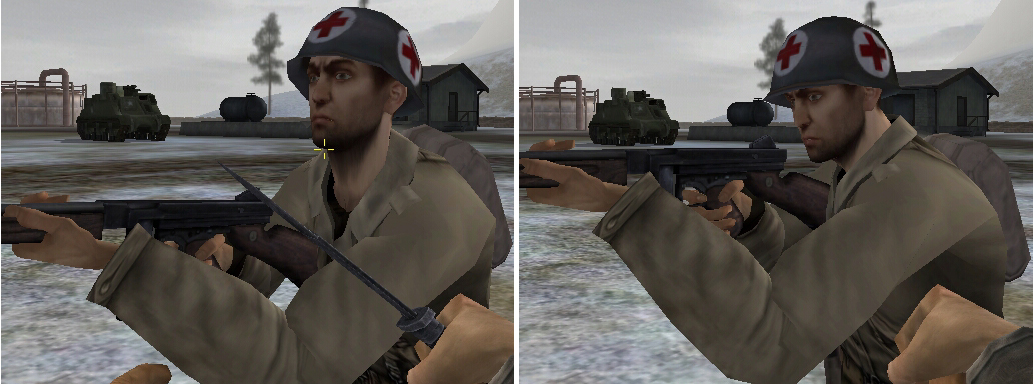
Figure 5. Example of a posture change during firing action.
The movements of body parts are relatively well supported visually. Although the players do not have direct control of the individual body parts, there are a number of variations that are based on the action combinations initiated by the player. For example, aiming and shooting with a weapon executes slightly different animations depending on the basic posture. The perceivable primary action is, thus, context-dependent. Furthermore, the changes in posture, during various actions, convey the act of a player to others within the vicinity. For example, standing, crouching or lying down can be executed in order to affect the performance and abilities of the player. This, in turn, can be perceived by other players who can, or are forced to, adapt their own actions accordingly. Figure 6 portrays the actions of taking a grenade out of a pocket and reloading a pistol.
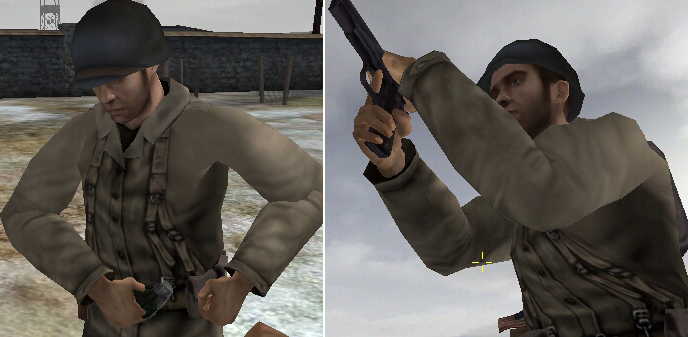
Figure 6. Avatar in the process of taking a grenade (left) and reloading a pistol (right).
Gestures are not well supported by the game. The few indications of system supported gestures are the thumbs-up sign, and two types of hand waves. All of these have been integrated with pre-defined radio messages. Figure 7 (left) illustrates an example of a hand gesture which is portrayed when a player shouts “Hold this position”. Due to the tactical nature of the game, the players would like to have more possibilities of signalling various messages directly with their avatars. Currently, the game system does not support these types of actions adequately, so the players have invented their own workarounds to overcome the communication barrier. One obvious example of gesturing is pointing in a certain direction with a weapon. This action can be used, for example, to tell a fellow team member to divert and check the location within the pointed region.
Figure 7. Basic hand gesture (left), dying animation (right) and after death posture (below).
Kinesics affect the performance and efficiency of players. For example, the accuracy of own fire is highly enhanced when standing still, kneeling, or lying down while aiming. This is especially important for long-range weapons, such as a sniper rifle. Furthermore, crouching or crawling offers a smaller area of target for the opponent to hit, although the negative aspect is the reduced speed of movement. Versatile support for kinesics can, therefore, manifest the actions and intentions of a player while offering a rationale for adapted game parameters. The designers should analyse the potential of kinesics in enhancing communication, collaboration and cooperation possibilities. If the action of a player is shown to others, they have a chance to react accordingly.
Autonomous and Automatic Actions
Autonomous actions play an important role in terms of game-controlled features that offer interaction cues not directly controllable by the participants. The reactive actions that are stimulated by some other actions can be considered as subconscious or involuntary actions. These actions cannot generally be interrupted. For example, when the avatar is hit, the impact launches the recoil animation. After the amount of injuries has exceeded the critical level, the avatar falls down and the player is transferred into the spawn point selection mode and is, thus, out of the game for a while. Figure 7 (centre and right) provides an example of autonomous action which is executed when an avatar is critically hit. During the course of this action, the player loses his or her ability to control the game and the avatar loses all the equipment and eventually falls down.
Another common form of autonomous action is the procedure which is initiated by specific hot spots, or objects, in the game world. Reloading, medical aid, mechanical aid and base capturing are all examples of actions that do not require specific control from the player. It is enough to navigate near or adjacent to the specific hot spot and the rest is automatically done by the system. In this sense, autonomous actions offer a way to ease the players’ burden, while automating some mundane actions. However, when this is done, the game should illustrate the cause of actions clearly. If it fails to do so, the actions may go totally unnoticed – especially by the opposing team members.
Perhaps the most significant interaction form of this category is the idle animation of avatars. When the player is not controlling his or her avatar, it runs through specific action sequences that seem to be quite random. Blinking of the eyes, breathing movements, quick side glances, and other subtle movements are all executed without direct control from the player. Although the significance of these actions for the outcome of the game is minimal, they increase the sense of awareness. Other avatars do seem to be "alive" - whether controlled by a player or not. Based on the data, the amount of autonomous cues could be enhanced. Non-sequential and weight-factor modifiable ambient visualisations and auralisations could both offer liveliness and information to the players.
Non-verbal Audio
Non-verbal audio, in Battlefield 1942, includes the sound effects of various actions, such as shooting, running, jumping and reloading. Also, different vehicles and weapons make specific and often recognisable sounds. Although the footsteps of an individual soldier are impossible to hear, an approaching tank is clearly indicated by the roar of its engine and noise from its tracks. Even the whistling sound of incoming artillery fire can be perceived as a fast-action alarm, which is adapted depending on the distance.
In relation to interaction cues that act as alarms, one of the players reports a phenomenon which occurs when an aircraft is damaged. A short period of silence indicates to the pilot that the aircraft is about to explode:
"I am flying with my Spitfire over the enemy territory when I notice the deadly anti-aircraft artillery fire. My aircraft starts smoking and then catches fire. I struggle onwards, there is no place to land. Suddenly, the rattle of fire ceases. It’s now or never. I jump off and parachute down to safety."
The short period of silence in the sound of fire, thus, triggered the player to take action before the plane exploded. If the imminent explosion were not indicated by the game, there would be no possibility for the pilots to escape in time. Such seemingly small cues can, therefore, drastically enhance the players’ ability to “learn” the game. While they are often ambiguous and too subtle to hear for novice players, an experienced player can benefit from them.
As there is no in-game support for voice communication, paralanguage or paraverbal communication is modelled in terms of pre-programmed radio messages and context-dependent utterances. Other team members can hear these voice-acted messages and utterances wherever they are located. The tone and pitch of the voices tend to follow the conventions of the WWII era. An interesting feature is the voice set that follows the characteristics of the nation the team is playing.
The utterances convey the status of the game for the players. For example, a strong and supportive tone is used whenever the team captures a base. In case a base is lost, a desperate cry for action is executed. So, whatever the language used (i.e., German, English, Japanese, Russian), the players are able to get the feeling of the situation. Additional utterances and shouts are used whenever a player falls, gets killed, is hit by a vehicle, or is struggling with barbed-wire. In general, almost every action in the game is indicated by a perceivable sound effect.
Non-verbal audio would seem to be a very important interaction cue, especially in fast action games. Spatial audio, distinctively realistic sounds and consistent sound effects provide beneficial support for the visual interaction cues and, thus, enable the players to receive more information at the same time. The tendency to emphasise visual material over aural content is, however, relatively evident also in this game. It would appear that the true potential of audio sceneries and aural cues have not been harnessed.
Language-based Communication
Spoken or written communication, during the battles of Battlefield 1942, is mainly managed with predefined voice messages and text-based chat channels. The cries for air support, need for backup, enemy sightings, and status reports are the most common messages filling the audio space of the game environment. Textual chatting is an additional form of exchanging information, but due to the typing effort, would seem to be used less, at least during periods of hectic action. In reality, the chat channel would seem to be crowded with non-contextual data, such as players taunting each other in general, complaining about network delays, or just exchanging experiences. Contextual messaging is mostly used to provide information not supported by the predefined voice messages, or to add some relevant data to these.
In order to improve verbal communication during the game sessions, for the purposes of the research, third-party voice-over-IP software and LAN settings were used. The game increased to a much higher level when players could actually exchange information and requests in real-time without additional effort. Spoken dialogue during these experiments was almost constant. Players were able to give general directions verbally and then provide supportive information through the game system. An example situation was recorded by one of the players:
"Team member Aston Blade shouted for a medic. I responded immediately and requested him to acknowledge his position on the map. After visual acknowledgement I was able to give him an estimated duration of my journey…"
The acknowledgement, in this case, was conducted by sending a pre-defined radio transmission in the game. This made the symbol of Aston Blade flash in yellow and, thus, enabled the medic to locate his position on the map. Figure 8 illustrates the radio transmission menu options (top), event and chat log (left) and an on-screen mini-map (right).

Figure 8. Radio message menu, chat and event log and on-screen mini-map.
The importance of language cannot be overestimated in collaborative and cooperative games. Pure language, however, is mostly not accurate and fast enough to glue the actions of the game together. Therefore, spoken or written dialogue needs support from additional interaction forms (e.g., the flashing arrow in the aforementioned example). Indicating the position of the approaching enemy or directing one’s own troops, for example, requires both position and direction information. Naturally, these can be given as grid coordinates and compass directions, although runtime conversion would seem to be difficult for the players.
Spatial Behaviour
Actions occurring in space and place involve mainly character control within an environment. Orientation would appear to be an important cue for others to see which direction the player is looking, as well as a way to overcome the restrictions of the limited field of vision. The players tend to constantly run around with necessary side-glances to see what is going on outside their restricted field of view.
During various actions, the avatar’s positional changes convey the act to others within the vicinity, and also provide the possibility to gain, for example, an advantage over the opponent. Kneeling behind a crate, or other object within the environment, is one typical way of seeking cover and gaining an element of surprise.
Movements of the individual players, or the group of team members, are usually related to various strategic actions. The search for tactical advantages includes, for example, positioning oneself behind the opponent by circling around him or her. Moreover, the positioning of oneself in relation to the team members is an important tactical tool. Supportive firing from a covered angle and crossfire enabled by the spread-out positions of the players are examples of team positioning. The execution of tactical manoeuvres is supported by an on-screen map (see Figure 8), which indicates the positions of team members (there is no specific ID, only an arrow, vehicle, plane or ship symbol). The only way to identify a particular player is to see his or her yellow transmission symbol.
The combination of different vehicles enables the players to have numerous tactical manoeuvres, all involving the effective use of space. An attacking player driving a tank may, for example, request air support in order to get rid of a well-covered group of anti-tank soldiers. The fast flying fighter can distract and possibly destroy the enemy by attacking it from a different direction and at a different height. Figure 9 illustrates the differences in avatar orientations and spatially organised locations.
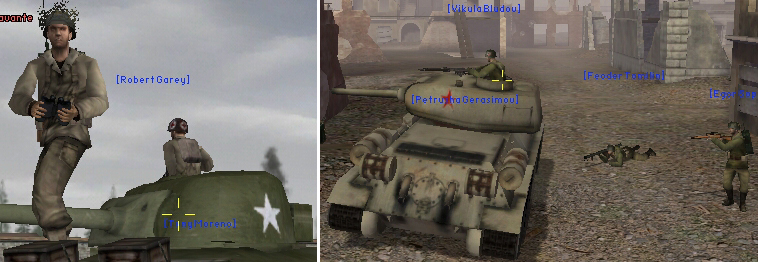
Figure 9. Avatars with different orientations (left) and a spatially organised group (right).
It is possible to change one’s orientation also when mounted on a vehicle. Separate directions of view enable the crew members to cover a wider field of view than would be possible for a single person. The tank crew in the following diary excerpt, for example, makes full use of their two-man task force:
"He took the controls of the tank and I followed in order to man the machine gun turret. We rushed forward immediately, I was shouting the whereabouts of the enemy to him and he was manoeuvring. His limited field of view would have been much less adequate for these narrow streets. Every now and then we entered the enemy territory with our eyes sharp – in two simultaneous directions. Definitely a collaborative control of the situation."
The aggressive nature of the game tends to force the players to maintain a large distance between them and the opponent. Some examples of close encounters occur, however, due to an element of surprise and the narrow passages and small rooms in the environment. Still, the distances between player avatars, particularly of opposing teams, are generally long. Figure 10 illustrates average firing distances. The opponents are pictured in the centre of the images.
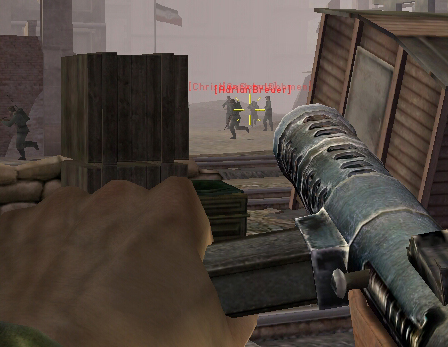
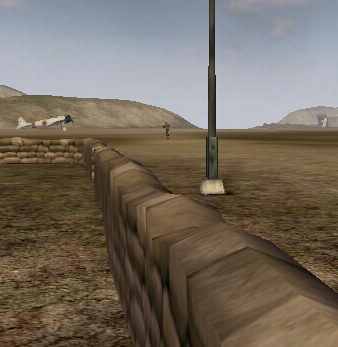
Figure 10. Average firing distances render the avatars with relatively low level of details.
Physical Contact
Simulated physical contact is clearly an important type of interaction in this kind of fast action fighting game. The level of violence in general is relatively high due to the mainly aggressive forms of interactions. Shooting, stabbing, and blowing-up are the main actions executed to get rid of opposing team members. Other examples of physical contact include collisions with vehicles (usually fatal) and obtaining injuries from barbed-wire.
The injury type differentiates various body parts from each other. A shot in the head is generally more fatal than a shot in the arm. Furthermore, the speed and force of impact is modelled according to the weapon-type. For example, artillery fire, with the explosion factors, generates a much more powerful effect than machine gun bullets, which need to gain direct impact on the target.
There are no direct alternatives to violence, except running away or hiding. The game system does not support any form of blocking or otherwise defensive contact-oriented actions. Even classical non-violent actions, such as providing medical aid, are modelled without physical contact. It is enough to execute the action within the proximity of the other player.
Environmental Details
Environmental interaction forms include the use, modification and affect of the environment and the objects within. The environment limits the playing area in the form of boundaries, it affects the player performance (e.g., water, visibility), and it offers protection for the players in the form of additional scenery (e.g., colours, textures, and objects). The environment also contains key locations (i.e., bases that can be invaded or defended) and service areas (e.g., healing, vehicle fixing and ammunition reloading). Figure 11 (left) represents a damaged tank approaching the home base in order to reload ammunition. An additional illustration of the importance of key locations is provided by one of the participants:
"I am going through half of the map to get to a good stalking place. The place I am trying to reach is a place from where I can shoot my enemies without being noticed and it also has extra ammunition to reload guns."
Creating a diversion is tactically one of the most frequent forms of interactions. Diversion is basically created by spatial behaviour, for example, when a major force attacks straight on while other team members circle around to surprise the opponent from behind. However, this type of activity is strongly related to the layout and familiarity of the environment. If the teams are experienced players, the element of surprise is absent as all the advantage points within the environment are known. This may be one reason that has led to the highly developed playing routines, such as common tactics, specific roles of team members, and order of actions.
The playing routines become visible, for example, within maps that contain specific strategic locations combined with a limited number of interconnecting routes. Experienced players tend to select the most advantageous direction for attack, which, in turn, is generally known to the veteran defenders. Furthermore, there is evidence of synchronised attacks that always require certain supporting player roles in combination with the main fire team. For instance, overcoming a strongly defended choke point was usually performed with tanks that were constantly repaired by engineer soldiers following in close proximity. Novice players tend to try out various other tactics, but eventually learn the best and most efficient way to achieve the victory.
Artefact related interaction consists mainly of handling various weapons, ammunition, armour, vehicles, and other equipment. The players select their basic set of equipment at the beginning of the game. However, vehicles and additional equipment can be freely acquired from the field, if available. The combination of different weapons and corresponding player roles (e.g., scout, medic, anti-tank, tank, fighters, boat) bring a sense of role-playing to the game, and also provide more variation in terms of tactics and playing styles. Otherwise, the interactions concentrate on possible weapon and vehicle variations with other team members, and reloading the weapon when needed. Tactically, the selection of weapon or vehicle, the reloading time, and the use of grenades strongly affect performance, so in this sense the objects and their management play an important role in the game.
Objects, such as vehicles, aeroplanes, and ships, have two important roles in the game. First, they act as modes of transport and as weapons. Second, they allow players to jointly control different features of a selected vehicle. For example, the B-17 bomber plane can have a pilot/bombardier, and two machine-gunners. This enables three participants to engage in collaborative action. Figure 11 (right) illustrates a German car with two soldiers. One of the players is driving, while the other is the passenger. The vehicles, however, are not always used as they are intended to be used. For example, one of the players describes his unorthodox way of using transportation:
"The aeroplane has only one seat and we can see that there are no other planes for a while. We need to decide which of us will go and which will stay. Quickly we come up with an idea that one of us could stand on the wing while the other one flies the plane. My friend jumps into the cockpit and I onto the wing. He starts to accelerate and I try my best to stay on the wing. I manage to hold my balance with fast and small movements. At some point we come over the base we were supposed to capture. I jump down close to it and engage in battle. My friend flies the aeroplane and bombs the base while I hold my place to get the flag."
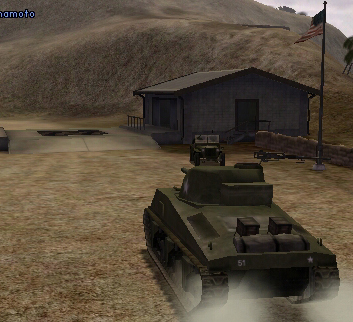
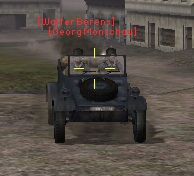
Figure 11. A tank hurries back to base for a quick fix and ammunition reload (left) and a vehicle (right) carrying two players (e.g., driver and passenger).
Dynamic environmental details, such as construction and destruction, are generally not supported by this game, although the vehicles and other “non-static” objects can be destroyed. Apart from these, there seem to be no major examples of modifiable or movable elements of the environment. For example, the environment does not get permanently damaged by the explosions, all the wreckage vanishes after a while, and the existing structures cannot be modified.
Chronemics
Use and perception of time is one interaction form generally not directly supported by the games. However, the participants of a collaborative session are able to see each other's behaviour as it occurs, thus, making real-time interaction possible. This coherent and synchronous progress of time, whether realistic or not, makes it possible for the virtual environments and its participants to simulate the non-verbal communication forms called chronemics.
The clearest examples of temporal interaction forms are related to strategic and tactical elements of the game. For example, the capturing of a base requires a certain amount of time with no enemies in the vicinity. Furthermore, when a player is killed, he or she has to wait for a certain period of time before rejoining the battle. In addition to these, the locations of the bases (i.e., long distances) can cause a player to spend a considerable amount of time just to get into the heat of the action. This, in turn, affects the overall game balance and can cause a relatively strong need for coordinating the actions of the whole team. Otherwise, the impact of the individuals may not be sufficient for gaining the critical mass.
Other chronemic interaction cues include, for example, waiting for the re-spawning of a vehicle (which occurs automatically after a vehicle is destroyed), reloading of weapons, and time periods required for healing and fixing. During the intense battles, these time durations, although relatively short, increase the players’ anxiety. Furthermore, time-related features of the game force the player to plan his or her actions accordingly.
Discussion
The perceivable interaction forms illustrated in the previous section are not, by themselves, a recipe for successful communication, co-ordination and co-operation. However, by making the intentions, actions, and effects visible to the players, the interaction manifestations can improve the possibilities for collaboration. For example, the following diary excerpt illustrates a joint effort that encourages the participants to use their special skills and different views:
"Aston Blade was acting as an engineer during our two-man tank mission. While I was able to heal our wounds with my medical gear, he was able to fix the tank. So, we kept healing and fixing all along while constantly engaging the enemy. Attacking, defending, pursuing and retreating. The whole incident was further supported by Lt. Kilgore who provided sporadic air support. His sweeps over the attacking troops kept them relatively limited in numbers."
The different roles available for the players enable them to increase their overall performance. For example, an engineer and a medic controlling the same vehicle (one driving and the other in the turret) make them more efficient in their primary task. Extensive interpersonal communication is, however, needed in order to synchronise the healing, fixing, and firing actions. Although, most experienced players seem to be able to act smoothly without much verbal communication, the spoken dialogue seemed to increase the feeling and sense of togetherness.
Further examples of collaboration are incidents that place participants in different locations and with different views of the environment. This course of action can be deliberate (tactical) or it is forced by the situation (environment, condition of the player, spatial positions, etc.). Although Battlefield 1942 has a specific scout that can direct the artillery fire, the players sometimes acted this out without direct support from the system:
"I parked my rocket launcher at a distance from where I could shoot the rockets nicely. My friends were closer to the city than what I was. I started to shoot. The first rockets did not exactly go where they were wanted. I could not see the city and aiming was rather hard. Therefore, my friend started to give me instructions to correct my aim. I managed to get hold of the right aim and kill some enemies. At some point, my aim drifted away from the target point. Right away, my friend let me know that rockets missed the target and that I should lift it a bit up and to the right. I did it and hit the target point again."
There are numerous similar examples of collaborative efforts. Often the reasons for collaboration seemed to be purely tactical, but in many cases, social togetherness drove the players to try out joint efforts. An example of the former type is the combination of various weapons and positions in order to gain an advantage over the enemy. The latter, while more difficult to analyse, is exemplified by the numerous co-ordinated stunts the players occasionally try out. For example, placing 25 soldiers on top of the wing of a B-17 and then taking off can definitely not be considered as a useful action.
Battlefield 1942 has clearly been designed to encourage team playing, although there are solo-players who can be almost invincible with their superior skills. The combination of different weapons and roles, added with environments that provide plenty of challenges for communication, co-ordination, and co-operation, seem to create intriguing examples of team interactions. The teams may follow some overall tactical guidelines, but mostly the actions of an individual player are co-ordinated by adapting to the actions of others - both friends and foes. This raises the importance of making all actions perceivable.
The illustrated examples of interaction forms, although somewhat limited, contain relatively high level of details. However, an important support for in-game interaction forms is actually constructed outside the game system (e.g., voice-over IP speech support). The players constantly use off-game interaction to enhance the co-operative aspects of playing. Without this channel, collaboration would seem much harder. Questions, such as “where are you?” and “do you have a tank?”, fill the game session. The participants obviously realise the need for collaboration, and also want to exercise it.
The findings and illustrations from game sessions provided by this paper offer a descriptive glimpse into the world of collaborative gaming. There are numerous interaction forms that can be observed during the game sessions. However, all the actions of the players are not represented by the game system, and a number of interaction forms that could be modelled and implemented to increase the collaborative potential of the game exist. For example, when a player studies the map, this action is not indicated to the others.
The main implication of this research is twofold. First, the game systems have evolved to a stage where fruitful collaboration and communication is possible. Second, there still are relatively large gaps in terms of interaction forms that have not been included in the games. While this work considered only the aspects of a single game application, the findings can be related to the work described in Manninen (2002). The comparison of the results reveals that the Battlefield 1942 supports a larger set of interaction forms than Counter Strike. This could be one of the reasons for improved collaboration support. However, the technological advancements have also significant role in increasing the possibilities of making interaction forms visible and audible.
The design suggestions originating from the study encourage the use and application of the rich interaction framework and the corresponding model. The results of analysis direct the design and development to support the creation of rich interaction. The primary emphasis is to avoid purely technologically driven design, and to focus instead on the creative process and conceptual understanding of rich interaction. The art assets can be designed in a way that they truly support cooperation and collaboration.
However, the application of the rich interaction form models to the design is not as straightforward as to implement them to the requirement specification. The concept model cannot be applied as a strict set of features that needs to be implemented in order to achieve rich interaction. Instead, the design and development has to be adapted to support the creation of rich interaction. The delineation and descriptions of supported interaction forms, in the case of Battlefield 1942, provide one approach in recognising the possibilities of enriched interaction forms. Although state-of-the-art within the game industry, the object of study still has significant weaknesses in terms of supported interaction forms. By making the analysis explicit, this paper has advanced one step towards rich interaction design.
Concluding Remarks
This paper described the concept of interaction forms by providing examples of perceivable actions that occur in a contemporary multi-player game. The results of the analysis indicate that the communicative and co-operative aspects of a current multi-player game are enabled by the relatively limited set of interaction form variations. Still, the available features seem to be enough to enable a satisfying level of collaboration. This level, however, is usually achieved by overcoming the restrictions and limitations of the system. The in-game support for communicative interaction forms is, thus, usually too low.
The main implications for design emphasise the balancing of the games by using artistic selectivity and principles of game design, while encouraging team-oriented actions by making all the interaction forms perceivable to the participants. The designers of multiplayer games could learn from the fields of communication and computer supported co-operative work. Interaction can be efficiently enriched if every action and interaction is modelled and portrayed to the players of networked game. While these representations may not be directly functional features, they offer great potential as communicative elements in interaction.
Furthermore, the issue of collaborative perception, i.e., the possibilities to achieve shared situational awareness among the team members, becomes critical within the context of both virtual spatiality (e.g., large game worlds) and physical isolation (e.g., players communicate only via computer mediation). This means that the limited peripheral perception possibilities offered by contemporary multiplayer games should be supported by efficient communication channels and representational rendition of player actions within the manifested context of that particular individual.
In the case of Battlefield 1942, the lack of in-game voice-over-IP (VOIP) support is the most critical hindrance of communication. Moreover, the 3D audio model of the game does not convey the spatial attributes (i.e., proximity, direction, orientation and timbre) of sound sources well enough. The support for more nuanced and subtle audio model would enhance the situational awareness of players. In addition to aural improvements, the overall visual detail and finesse needs to be improved in order to overcome the generally long viewing distances. The pixellated silhouettes of enemy soldiers leave much to be desired in terms of visual interpretation.
The results of this research are significant for game designers as they illustrate the importance and possibilities of rich interaction forms in multiplayer game settings. It is possible to reduce the limitations and restrictions of computer mediation by enabling more flexible and natural interaction. Although the naturalness and intuitiveness of face-to-face communication is hard to achieve, virtual environments provide additional and novel ways to enhance the weak areas of interaction. The explicit interaction form examples illustrated in this paper offer insights into the world of rich interaction design. By taking a holistic approach to interaction form support, game designers can create games that fully exploit communication, collaboration and co-ordination possibilities.
References
Aarseth, E. (2001). "Computer Game Studies, Year One." The International Journal of Computer Game Research, 1(1).
Badler, N. I., and Allbeck, J. M. (2000). "Towards Behavioral Consistency in Animated Agents." Deformable Avatars 2000, 191-205.
Battlefield 1942 (2002) Digital Illusions CE, PC version for Windows. Electronic Arts [CD-ROM].
Benford, S., Bowers, J., Fahlen, L. E., Greenhalgh, C., and Snowdown, D. (1997). “Embodiments, Avatars, Clones and Agents for Multi-User, Multi-sensory Virtual Worlds.” Multimedia Systems, 5(2), 93-104.
Büscher, M., Mogensen, P., and Shapiro, D. (2001a). "Spaces of Practice." Seventh European Conference on Computer-Supported Cooperative Work, Bonn, Germany, 139-158.
Cassell, J. (2000). “Embodied conversational interface agents.” Communications of the ACM, 43(4), 70 - 78.
Crawford, C. (1982). The Art of Computer Game Design. Osborne/McGraw Hill, Berkeley, CA.
Damer, B., Kekenes, C., and Hoffman, T. (1996). “Inhabited Digital Spaces.” Computer Human Interaction '96 (CHI96).
Fraser, M., Benford, S., Hindmarsh, J., and Heath, C. (1999). “Supporting Awareness and Interaction through Collaborative Virtual Interfaces.” 12th Annual ACM Symposium on User Interface Software and Technology (UIST'99), Asheville, NC, USA,
Manninen T. (2000) “Interaction in Networked Virtual Environments as Communicative Action - Social Theory and Multi-player Games.” In proceedings of CRIWG2000 Workshop, October 18-20, Madeira, Portugal, IEEE Computer Society Press, pp. 154-157
Manninen T. (2002) Interaction Forms in Multiplayer Desktop Virtual Reality Games. In Proceedings of VRIC2002 Conference. Richir S., Richard P. and Taravel B. (eds). June19-21, ISTIA Innovation, pp. 223-232
Manninen T. (2003) Conceptual, Communicative and Pragmatic Aspects of Interaction Forms - Rich Interaction Model for Collaborative Virtual Environments. In Proceedings of Computer Animation and Social Agents (CASA) Conference, IEEE Computer Society Press, pp. 168-174.
McGrath, A., and Prinz, W. (2001). "All That Is Solid Melts Into Software." Collaborative Virtual Environments - Digital Places and Spaces for Interaction, E. F. Churchill, D. N. Snowdon, and A. J. Munro, eds., Springer-Verlag, London, 99-114.
Robertson, T. (1997). “Cooperative Work and Lived Cognition: A Taxonomy of Embodied Actions.” European Conference on Computer Supported Cooperative Work, 205-220.
Rollings, A., and Morris, D. (2001). Game Architecture and Design Gold Book, The Coriolis Group, Scottsdale, AZ.
Rouse, R. (2000). Game Design: Theory & Practice, Wordware Publishing, Inc., Plano, Texas.
Thalmann, D. (2001). “The Role of Virtual Humans in Virtual Environment Technology and Interfaces.” Frontiers of Human-Centred Computing, Online Communities and Virtual Environments, R. Earnshaw, R. Guejd, A. van Dam, and J. Vince, eds., Springer-Verlag, London, 27-38.
Witmer, B. G., Bailey, J. H., and Knerr, B. W. (1996). “Virtual spaces and real world places: transfer of route knowledge.” International Journal of Human-Computer Studies, 45, 413-428.
